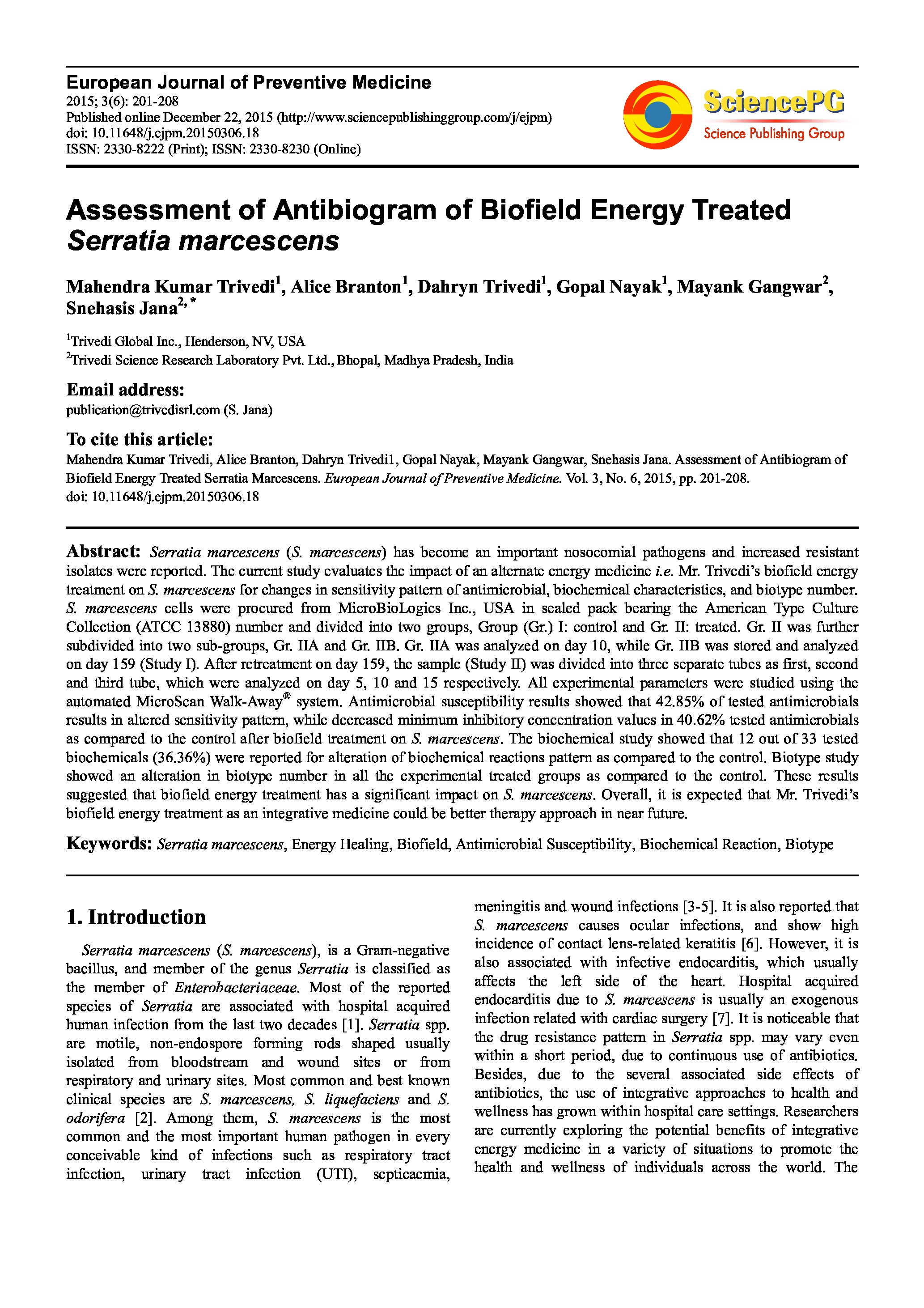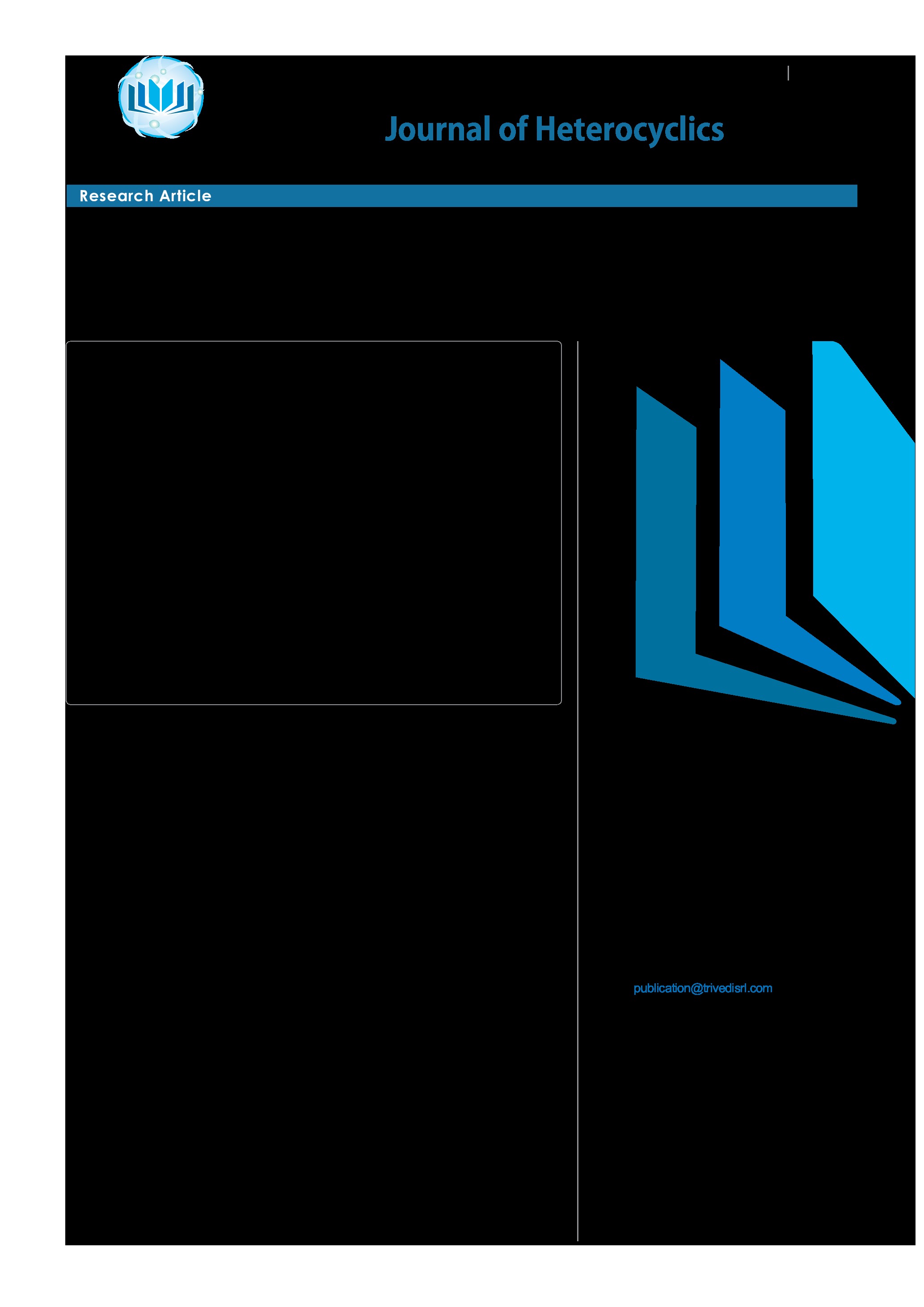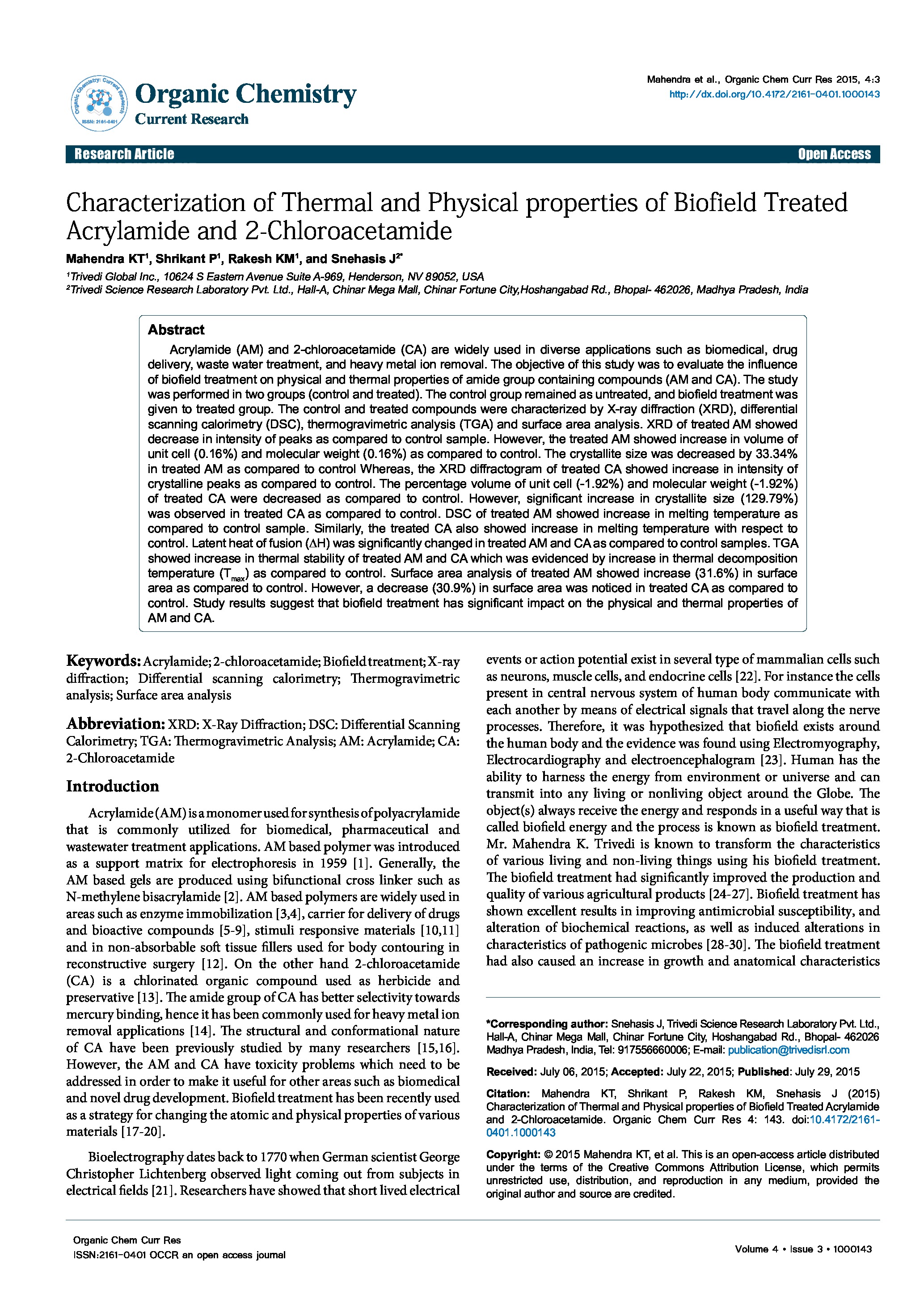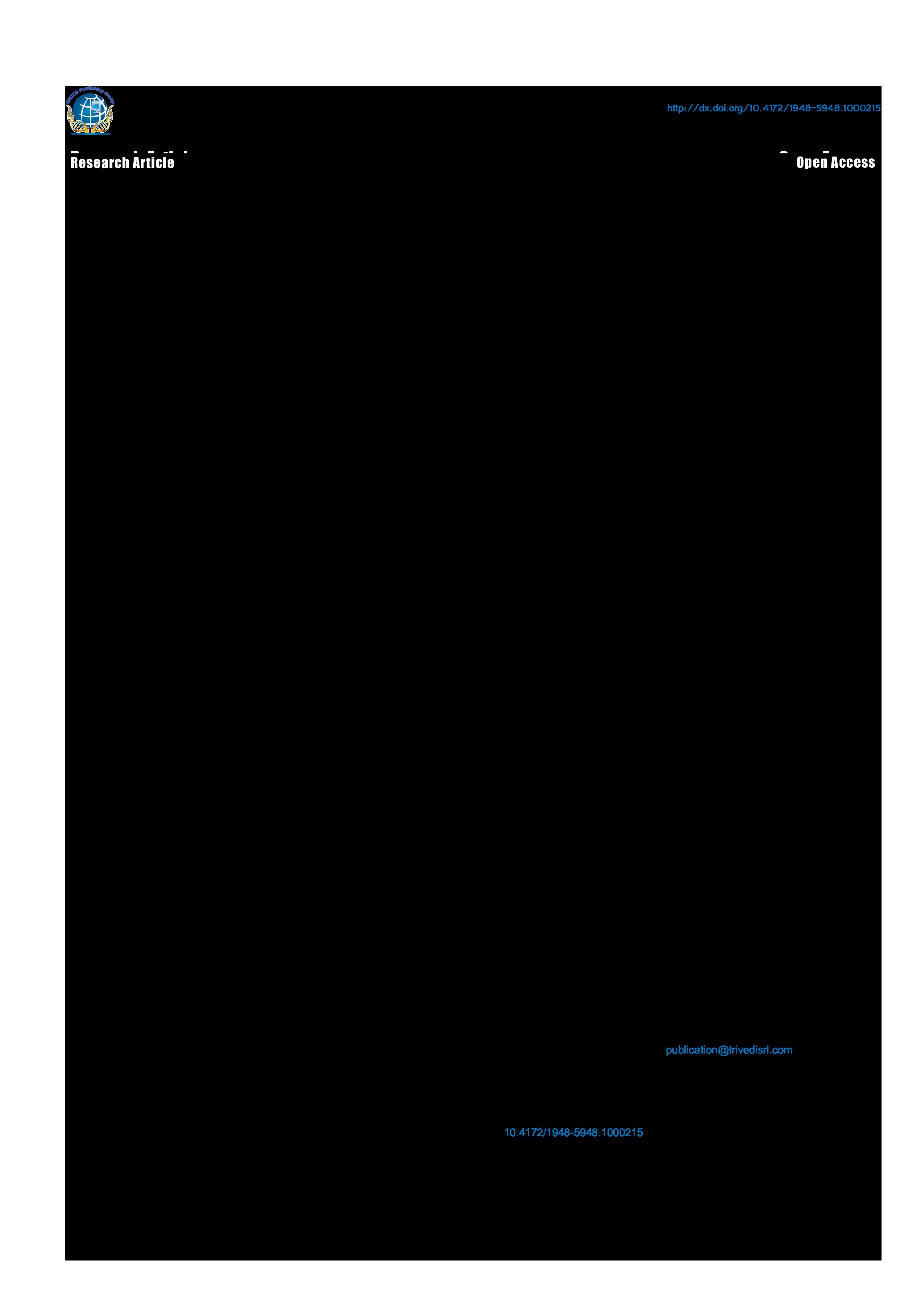Date of upload:
11.10.2016
Co-author:
Alice Branton, Dahryn Trivedi, Gopal Nayak, Ragini Singh, Snehasis Jana
Abstract:
Toluic acid isomers are widely used as a chemical intermediate in manufacturing of dyes, pharmaceuticals, polymer stabilizers, insect repellent and other organic synthesis. The aim of present study was to evaluate the impact of biofield treatment on physical, thermal and spectroscopic properties of ortho isomer of toluic acid (OTA). The OTA sample was divided into two groups, served as control and treated. The treated group received Mr. Trivedi’s biofield treatment. Subsequently, the control and treated samples were evaluated using X-ray diffraction (XRD), differential scanning calorimetry (DSC), thermogravimetric analysis/ derivative thermogravimetry (TGA/DTG), Fourier transform infrared (FT-IR) and ultraviolet-visible (UV-Vis) spectroscopy. XRD result showed 26.66% decrease in crystallite size in treated OTA sample as compared to control. Furthermore, DSC analysis result showed that latent heat of fusion was considerably reduced by 6.68% in treated OTA sample as compared to control. However, an increase in melting point was observed in treated sample. The melting point of treated OTA sample was found to be 107.96°C as compared to control (105.47°C) sample. Moreover, TGA/DTG studies showed that Tmax (temperature, at which sample lost its maximum weight) was decreased by 1.21% in treated OTA sample as compared to control. It indicates that vaporisation of treated OTA sample might increase as compared to control. The FT-IR and UV-Vis spectra did not show any significant changes in spectral properties of treated OTA sample as compared to control. These findings suggest that biofield treatment has significantly altered the physical and thermal properties of OTA, which could make it more useful as chemical intermediate.




